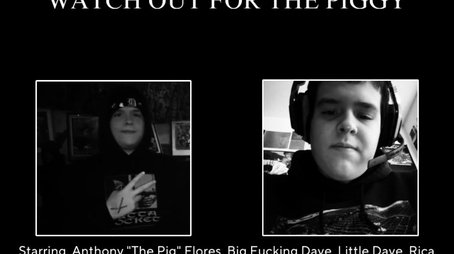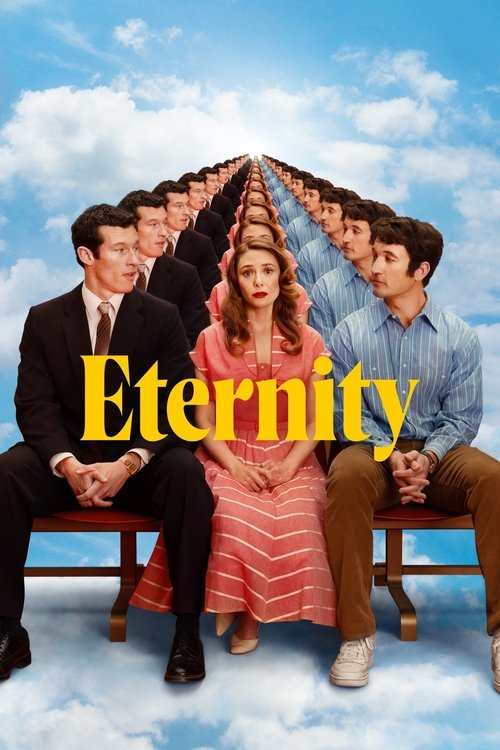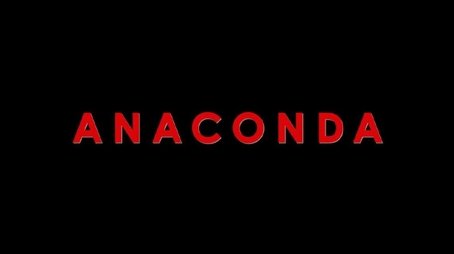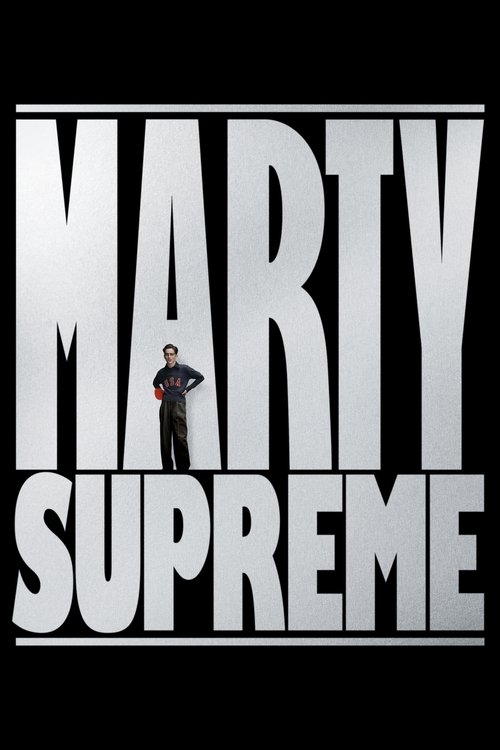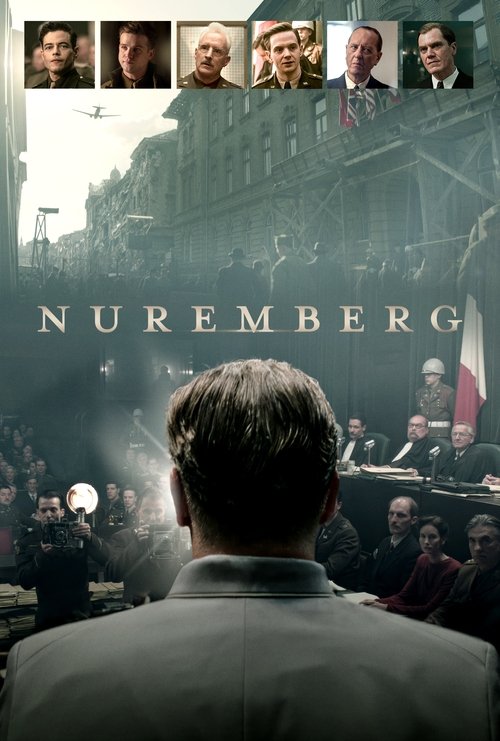
Ask Your Own Question
What is the plot?
The film opens in a crowded port city where a man moves through terminals with practiced caution. He carries no luggage and keeps his gaze low, altering his pace whenever a uniformed officer glances his way. Across the harbor a customs office hums with routine inspections; behind its closed doors Chiara, a woman who has lived a double life for years, monitors incoming manifests. She is outwardly the companion of a shadowy criminal figure in the city's underworld, but in the morning briefings she sits with investigators, trading notes and calibrating the net they tighten around an elusive target known by the alias Anthony Zimmer.
Chiara leaves the office under the cover of a long coat, walks to a café by the quay, and joins the man she has chosen to observe. The man introduces himself as François Taillandier. He is approachable, softly spoken, and ordinary in a way that attracts little attention. Chiara watches him for a while, speaks with him casually about books and food, then disappears into the crowd. Unbeknownst to François, a team of detectives stationed in unmarked vehicles waits on the surrounding streets. Chiara has put him in a place where the people looking for Anthony Zimmer will be drawn to him if they believe he is the mastermind they want.
Throughout the first acts the camera follows Chiara's meticulous work. She attends late-night meetings with a small squad from customs enforcement who brief her on Anthony Zimmer's history--an expert in laundering illicit funds who has vanished before, rumored to have changed faces and disappeared into the wide world. She takes calls from an informant who passes her names and movements of Russian operatives in the city. She meets in a dimly lit bar with the man she is publicly billed as dating, the oily associate of the Russians, and feeds him calibrated lies designed to steer the mob's attention onto François. That associate returns to his superiors with confirmation: a suitable target is in place.
At the same time the narrative follows the man called François in ordinary scenes. He shops at a market, stamps a postcard at a small post office, and sits reading the paper in the same café where Chiara first observed him. He remains polite and reserved when passersby strike up conversations. He smiles briefly at a child who drops an ice cream cone, and in the evening he locks the door to his modest apartment and lights a single lamp. The investigative team files reports suggesting he is nothing more than a convenient decoy--Harmless François, chosen by Chiara for the job.
As Chiara tightens the setup, officers conduct surveillance on safe houses and check financial records. They follow leads that circle back to Russian enforcers: men who have been hired to locate Anthony Zimmer and either capture him for interrogation or kill him to prevent testimony. The police believe Anthony remains at large, possibly living under a fabricated identity, possibly relying on his expertise in concealing funds. Chiara, working inside the criminal circle, provides the final confirmation that a French-looking man--François--has caught the attention of the mob.
One night, in an arranged public rendezvous that Chiara coordinates as bait, the plot reaches a dangerous point. The scene takes place on a riverfront promenade where tourists mingle and streetlights cast long reflections on the water. Chiara sits at a table of a riverside bistro. François arrives on schedule, sits across from her, and they speak in quiet voices about the city. He observes people passing and occasionally glances at the dark alleyways that border the promenade. Several uniformed officers have taken positions behind parked cars; others are concealed on rooftops and in an adjacent parking garage. Plainclothes detectives compound the watch by blending into the crowd, while Chiara's hand never leaves the inside of her coat pocket.
The men sent by the Russian syndicate approach in a black sedan that pulls into a narrow side street. They get out quickly--three of them at first, moving with military precision. They flank the promenade and advance across the cobbles toward the bistro. One carries a compact pistol in a leather holster; another holds a shotgun with the barrel low. They whisper into earpieces and quicken their pace when they sight François. He straightens and immediately recognizes the lethal focus in their movement. He stands to leave but one of the Russians steps in front of him, blocking the exit.
Chiara's expression hardens. She keeps her voice calm and raises a hand toward the detectives concealed behind planters; her fingers form a prearranged signal. The men in the sedan pause, exchange low commands, and the lead Russian takes a step closer. He taps François on the shoulder and accuses him in Russian, words that tumble harshly into the night. François replies in French, confused and then defensive. A shove occurs. One of the Russians produces the pistol and levels it; François moves his arm in a reflexive attempt to protect himself.
At that moment Chiara gives the signal. From their hiding places the officers emerge with rifles raised. The rooftop unit illuminates the street with a spotlight; a pair of aimed shots crack through the night air. The lead Russian shudders and collapses. Immediately the other two fire back, one discharging a shotgun round that dislodges a café umbrella and sprays splinters across a nearby table. The officers return fire with controlled bursts; one detective fires a single headshot that drops the second attacker. The final shooter attempts to sprint toward the sedan but trips on the curb and slides into the passenger-side door as more police converge. He lifts his pistol instinctively and fires once; the bullet slams into the doorframe. In less than a minute the police have neutralized every assailant. The riverfront goes quiet except for the distant wail of city sirens.
The emergency responders secure the scene, take the bodies away on stretchers, and begin an inventory of weapons. Forensic technicians photograph spent casings and blood splatter. Chiara rises from her seat and walks over to the body of the lead Russian, kneeling to check for a device or identification. François stands a few paces away, breathing hard, his hands trembling. An officer moves toward him and places a hand gently on his shoulder, asking questions about his wounds and his account of the attack. François replies in a voice that is measured but shaky. He tells the officer that he has been threatened before, that men have watched him. He uses his assumed name.
Inside an interrogation room at the precinct, François answers more questions. The detectives ask about his past, about travel, about acquaintances. He provides dates and names that match a life of quiet anonymity--work as a translator, a family in another region, a string of short-term rental addresses. The documentation he hands over matches his provided identity. The investigators remain skeptical but have no grounds to hold him beyond preventive interviews; he is released pending further checks. Chiara follows the paperwork to the station and remains a steady presence at his side while officers complete their rounds.
Once the scene clears, Chiara and François walk together through an emptying plaza. He thanks her quietly for being there, for the help that likely saved his life. She does not correct him when he uses the name she selected for his profile in the operation; instead she lets the facade continue. They take a taxi; Chiara accompanies him back to his apartment, where she watches him make tea and remove a well-stitched shirt. He moves with a restraint that suggests training in self-preservation, a practiced calm that the earlier attack barely cracks.
Later that night, in the dim light of his living room, François sits across from Chiara and speaks with an honesty that had not been present in the formal interviews. He tells her he appreciates her bravery in the face of danger. She looks at him in a way she has never revealed to her supervisors: a softness, an almost private grief. He asks about her work and she tells him a version of the truth--how she has been attached to a long-term investigation, how she believes in closing the case on a man who built his life on hidden accounts. Then he looks at her directly and removes his hat.
He sits for a moment, his face unreadable, as he unfolds a piece of paper. He admits that he knows a little of the world she describes--enough to understand the risk she takes--and then he begins to recount a life that mirrors none of the record she has on file. He tells her, in a low voice, about years of moving between countries, of managing complex financial transactions, of people who trusted him and people who hunted him. Chiara listens and does not interrupt. Her fingers tighten around her cup.
When he finishes, François breathes and then places his hand over the one she still holds. He looks at her and speaks a single name: Anthony Zimmer. He explains that he is the man the investigation pursues; that he is the money-laundering expert at the center of the files she reads each day. He says that he underwent reconstructive surgery months ago to change his appearance and that the face she has watched for the past weeks is the outcome of that operation. He tells her that he allowed himself to be seen as François because he sought anonymity, not because he wanted to die. He says that he took shelter in ordinary details to make himself uninteresting.
Chiara absorbs the confession without rising from her chair. She does not call out for backup, she does not seize him. Instead she exhales, and the expression on her face turns to something the police reports never record: not professional dispassion but a deeply private affection. She tells him she knew he was reckless, and she knew the cost of catching him might be high. He apologizes for endangering her. He admits that he used elaborate misdirections, that he built financial obfuscations across shell corporations to hide funds, and that he left breadcrumbs designed to mislead both the police and criminal factions. He confesses that he expected to be caught eventually, that he engineered chances for his enemies to overcommit so they would expose themselves.
After a pause, Chiara asks how the attack unfolded from his perspective. He explains that the Russian syndicate had been pressuring him for access to accounts he controlled; that when he refused, they attempted a strike on his life. He says the shooters likely received the wrong dossier--believing they had located Anthony Zimmer, not realizing Anthony had already assumed the face François now wears. He says he allowed the confusion because he wanted the mob to reveal itself. Chiara, listening, moves her hand across his knuckles.
She then decides to protect him. In a conversation with her superior, she frames the operation as a success--but she carefully omits the part in which she learned the target's true identity. The investigation file that goes forward names François as a survivor of an attempted killing and credits the customs unit with foiling a Russian hit. The officers recount the operation in formal terms and prepare the report that will close this episode. Those reports do not contain the late-night conversation in François' apartment.
The film proceeds to show how Anthony, now accepting the name François for convenience, and Chiara maintain their arrangement. She continues to feed controlled information to the underworld, prodding the syndicate while protecting his anonymity. He, in turn, dismantles parts of his own financial apparatus--closing accounts, shifting assets to accounts under control of law enforcement--to reduce the number of useful targets for the Russians. They work with a discreet subset of detectives who believe eliminating the syndicate's violent operatives is a higher priority than detaining Anthony immediately.
Tension returns when the mob realizes that its operatives fell into a trap. The Russians respond by escalating pressure on known associates. Chiara's double life grows riskier as her cover within the criminal group weakens; her companion in the underworld begins to suspect her duplicity. In a tense meeting at a nightclub owned by the syndicate, Chiara maintains her role as the boss's girlfriend and steers conversation away from François. Anthony watches from across the room, his face composed. The mob boss questions her about the failed operation; she deflects and offers a vague claim that the men were a rogue crew. The boss grunts and accepts the explanation but orders an internal audit; a lieutenant begins to compile a list of suspected traitors.
The atmosphere thickens until a second, smaller confrontation occurs in a warehouse on the river's edge. The lieutenant brings four enforcers to rough up a man they suspect of leaking information. Chiara arrives separately, ostensibly to smooth relations, and sees the man being manhandled. She steps between the group and the victim; a struggle breaks out. Her rogue role within the syndicate gives her plausible deniability for interfering: she is the boss's companion with influence. She uses that influence to order the beatings stopped, but the lieutenant watches her with new suspicion.
This incident accelerates the boss's decision to eliminate perceived threats. He signs the order to locate the man who has repeatedly escaped capture. The order circulates, creates a flurry of activity, and the police begin to fear that the city will drown in reprisals. Chiara, intimately involved, confronts Anthony and asks him to leave--somewhere far from the city. He refuses. He argues that vanishing for good would require abandoning people he still feels responsible for and that his disappearance would leave the financial chaos he created unresolved. He also admits that he cannot be certain he will survive if he flees. Chiara, for the first time, allows fury to cut through her control. She asserts that he must choose life over ledger.
A final confrontation arrives when the boss's men, now convinced that François is the hunted Anthony Zimmer, attempt a brazen daylight abduction outside a government building. They seize François and haul him into a waiting van. Chiara, who has been following at a distance, calls in the undercover unit and then moves to intercept. She runs toward the van, throws herself at the driver's door, and manages to wrench the wheel, causing the vehicle to lurch into a line of traffic. The officers behind the crash converge. In the melee a struggle erupts on the tarmac: one of the kidnappers raises a knife and lunges at François. An officer fires a warning shot that goes wide. In the chaos, the knife strikes; the victim receives a wound, and blood soils his shirt. Another officer applies a tourniquet. The kidnappers scatter and several are taken into custody.
Medical personnel transport François to a hospital. Chiara follows in an ambulance, holding his hand. In the emergency room they wait while surgeons stitch the wound and stabilize him. He wakes with stitches at his temple and an oxygen mask and turns his head to her when she calls his name. He opens his eyes, smiles weakly, and again speaks his real name. He thanks her for saving him. She presses her forehead to his and whispers that she will not let the case strip him of a life. Investigators gather evidence, interview witnesses, and file charges against the apprehended kidnappers. The ones who escaped become the subject of international arrest notices.
Once François recovers, he and Chiara meet with a small group of detectives to map a legal pathway forward. Anthony--François--offers to provide keys to dismantle the last of his money-laundering networks in exchange for protective measures and the possibility of entering witness protection should he choose to testify. The detectives accept a compromise: they will let him go after he transfers control of the accounts to law enforcement, if he agrees to remain available for a time. He signs consent forms and provides detailed ledgers, passwords, and contacts. Chiara sits beside him as he gives corroboration to the auditors.
In the closing scenes a final arrangement unfolds quietly. The Russian syndicate's remaining members are rounded up in a coordinated international sweep based on the intelligence Anthony supplies. Those arrested in the sweep are prosecuted; the bodies of those killed earlier remain cataloged in case files. The public records list the slain assailants as affiliates of the syndicate and note that their deaths occurred in the city's riverfront operation where law enforcement neutralized the imminent threat.
The film's final moments return to the café where Chiara first sat opposite François. They occupy the same table and speak softly as the late afternoon sunlight slants over the harbor. He looks at her and repeats that he is Anthony Zimmer, the man named in the files she reads, the money-laundering expert who changed his face. She smiles but does not reveal to the police the depth of knowledge she has about him. She thanks him for trusting her. He tells her he is grateful for her intervention and for sparing him an enforced exile from life. She takes his hand. Her fingers close over his with an intimacy that the earlier line entries and formal reports never record. The film ends with the two of them sitting quietly, the water moving beyond their view, as Chiara allows the façade of François to persist in public records while privately sharing the truth of his identity and the protection she chooses to offer because of what she feels for him.
What is the ending?
At the end of Anthony Is A Fat Piggy With No Honor (2025), Anthony Flores, the 750-pound pig known as The Piggy, faces a final confrontation with the Piggy Bullies. After a tense and violent showdown, Anthony emerges victorious but severely wounded. The film closes with Anthony lying peacefully in his pen, surrounded by the farm's quiet, symbolizing his enduring legacy and the complex nature of honor and survival on the farm.
Expanding on the ending scene by scene:
The climax begins as the Piggy Bullies, Cheese and James Canon, launch a coordinated attack on Anthony, aiming to dethrone him as the king of the farm. The setting is a muddy, rain-soaked barnyard at dusk, with the tension palpable in the air. Anthony, despite his massive size and slow movements, uses his strength and cunning to fend off the bullies. The fight is brutal and raw, with mud splattering and the sounds of grunts and snorts filling the space.
During the battle, Big Dave and Skid Machine arrive, initially hesitant but ultimately siding with Anthony. Their intervention turns the tide, and the bullies are overwhelmed. Cheese is pinned under a fallen beam, while James Canon retreats, limping and defeated. This moment marks the end of the Piggy Bullies' reign of terror.
After the fight, Anthony is left exhausted and injured. The camera lingers on his heavy breathing and the slow closing of his eyes as he settles back into his pen. The farm is quiet except for the soft rustling of leaves and distant animal sounds. Lt. Peanut Butter, a minor character who has been observing from afar, nods solemnly, acknowledging Anthony's victory and sacrifice.
Sensei Hubert appears briefly, offering a silent gesture of respect, reinforcing the theme of honor despite the harshness of their world. The final shot is a wide view of the farm at dawn, with Anthony resting peacefully, symbolizing both an end and a new beginning.
In terms of character fates:
- Anthony Flores (The Piggy) survives the final conflict but is left physically diminished, resting in his pen as the undisputed king.
- Cheese (Piggy Bully #1) is incapacitated and presumably removed from the farm's power structure.
- James Canon (Piggy Bully #2) escapes but is defeated and unlikely to challenge Anthony again.
- Big Dave and Skid Machine remain loyal allies to Anthony, their presence reinforcing the theme of loyalty.
- Sensei Hubert and Lt. Peanut Butter serve as symbolic figures of respect and order within the farm's social hierarchy.
This detailed ending portrays the resolution of the central conflict through physical confrontation and the reaffirmation of Anthony's complex status as both a gentle giant and a survivor in a brutal environment.
Is there a post-credit scene?
The available search results do not provide any information about a post-credit scene for the movie Anthony Is A Fat Piggy With No Honor (2025). None of the sources mention or describe a post-credit scene or any additional scenes after the main feature.
Therefore, based on the current data, there is no confirmed post-credit scene for this film.
What specific challenges does Anthony Flores face as a 750-pound pig in the story?
Anthony Flores, a 750-pound pig, faces physical and social challenges related to his enormous size, which affect his daily life and interactions with others in his community.
Who are the key supporting characters interacting with Anthony, and what roles do they play?
The story features several supporting characters who interact with Anthony, including local townspeople and possibly family or caretakers, each influencing his journey and the unfolding events around him.
Are there any significant events or turning points involving Anthony's status as 'king of the...'?
Anthony is described as the 'king of the...' which suggests pivotal moments where his dominance or reputation is challenged or affirmed, marking important plot developments.
Does the film depict any specific scenes highlighting Anthony's behavior or personality traits?
The film includes scenes that showcase Anthony's gentle nature despite his imposing size, as well as moments that reveal his unique personality and how he defies expectations.
What role does the setting in America's heartland play in the story of Anthony?
The setting in a quiet corner of America's heartland provides a backdrop that shapes the narrative, influencing the community dynamics and the legend surrounding Anthony as a local figure.
Is this family friendly?
The movie Anthony Is A Fat Piggy With No Honor (2025) is rated NC-17, indicating it is not family friendly and is intended for adult audiences only. It is categorized as a Comedy-Horror-Documentary with a very long runtime of about 10 hours and 50 minutes.
Potentially objectionable or upsetting aspects for children or sensitive viewers likely include:
- Graphic horror elements typical of the horror genre, which may involve violence or disturbing imagery.
- Adult themes and content consistent with the NC-17 rating, which often includes explicit sexual content, strong language, or intense violence.
- The title and character names suggest themes of bullying and possibly body shaming, which could be upsetting.
- The tone may mix dark comedy with horror, which can be unsettling or inappropriate for younger audiences.
No detailed plot spoilers are available, but the NC-17 rating and genre classification strongly indicate the film contains mature content unsuitable for children or sensitive viewers.

